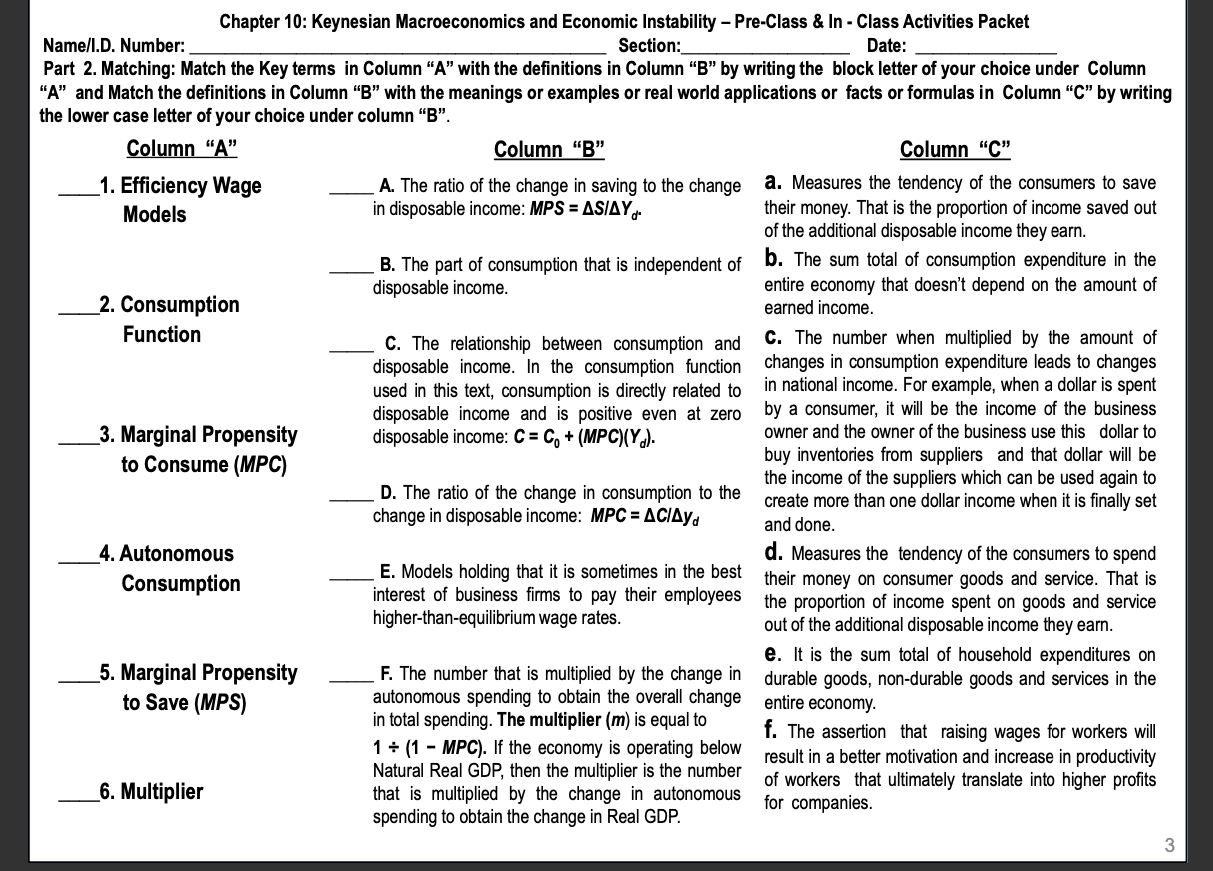Match the Key terms in Column "A" with the definitions in Column "B" by writing the block letter of yourchoice under Column
"A" and Match the definitions in Column "B" with the meanings or examples or real world applications or facts or formulas inColumn "C" by writing the lower case letter of your choice under column "B".
Please note: I need only question #1, 3 and 5. Thank you.
Chapter 10: Keynesian Macroeconomics and Economic Instability Pre-Class 8. In - Class Activities Packet Nameill.D. Number: Section: Date: Part 2. Matching: Match the Key terms in Column \"A" with the denitions in Column \"B" by writing the block letter of your choice under Column \"A" and Match the denitions in Column \"B\" with the meanings or examples or real world applications or facts or formulas in Column \"C" by writing the lower case letter of your choice under column \"B". Column "A" Column \"B" Column \"C\" 1. Efciency Wage A. The ratio of the change in saving to the change 3- Measures the tendency 0f the consumers to save Models in disposable income: MP5 = Mien. their money. That is the proportion of income saved out _2. Consumption Function _3. Marginal Propensity to Consume {MPG} _4. Autonomous Consumption _5. Marginal Propensity to Save (MP3) _6. Multiplier B. The part of consumption that is independent of disposable income. C. The relationship between consumption and disposable income. In the consumption function used in this text, consumption is directly related to disposable income and is positive even at zero disposable income: C = C0 -i- {MPCHY'L D. The ratio of the change in consumption to the change in disposable income: MPC = Add\" E. Models holding that it is sometimes in the best interest of business rms to pay their employees higher-than-equilibrium wage rates. F. The number that is multiplied by the change in autonomous spending to obtain the overall change in total spending. The multiplier (m) is equal to 1 + (1 - MPG]. If the economy is operating below Natural Real GDP, then the multiplier is the number that is multiplied by the change in autonomous spending to obtain the change in Real GDP. of the additional disposable income they earn. b. The sum total of consumption expenditure in the entire economy that doesn't depend on the amount of earned income. 6. The number when multiplied by the amount of changes in consumption expenditure leads to changes in national income. For example. when a dollar is spent by a consumer, it will be the income of the business owner and the ownerof the business use this dollar to buy inventories from suppliers and that dollar will be the income of the suppliers which can be used again to create more than one dollar income when it is finally set and done. d. Measures the tendency of the consumers to spend their money on consumer goods and service. That is the proportion of income spent on goods and service out oi the additional disposable income they eam. 9. It is the sum total of household expenditures on durable goods. non-durable goods and services in the entire economy. f. The assertion that raising wages for workers will result in a better motivation and increase in productivity of workers that ultimately translate into higher prots for companies







